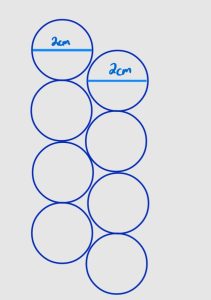Risks:
A major risk in our project currently is ensuring the carrier can stably levitate along the track. While the carrier can levitate in the initial straightaway prototype, this levitation is not straight or stable. Future designs need to consider adding longer elongated carrier sides and a smaller gap between the track and the carrier’s elongated sides. We are also considering having two lanes of magnets on the track instead of just one to account for the stability, automatically.
Design Changes:
Spacing between magnets has reduced
The length of the extended sides is larger in hopes of providing more stability
Schedule Changes:
Pushed back prototype 2 design

A was written by Angel Nyaga, B was written by Emanuel Abiye, and C was written by Myles Mwathe
Part A: Global Factors
The product solution meets global factors by providing a user-friendly interface and an educational opportunity to any user, regardless of their country of origin. The user interface in our project will either be a remote or a series of buttons. Both systems will have buttons instructing the track to go from one part of the track to another. While we will provide instructions on how to use the track in English, understanding how the user interface works is not limited to English speakers. Additionally, the electromagnetic principles that can be taught using the remote-controlled maglev train are not limited to English speakers because these lessons are primarily visual. Therefore, our product solution is accessible to a wide variety of individuals of different languages, cultures, and experiential backgrounds.
Part B: Cultural Factors
When it comes to MagLev trains, only three countries have fully implemented them into their transportation systems: China, Japan, and South Korea. Certain factors such as the cost of implementing MagLev trains into their transportation systems, not being able to use the current infrastructure for MagLev trains, etc. play roles in why nations are not looking into implementing MagLev trains into their transportation systems. What we want out of HoverRail is to serve as a learning tool, to show the benefits of MagLev trains. With such knowledge on these kinds of trains as well as seeing the benefits and comparing the pros of MagLev trains with current model trains, we want it to help change the minds of nations and their government or their transportation agency to see how beneficial and more efficient transportation would be in their nation if they replaced current trains with MagLev trains, regardless of cost and not being able to use current infrastructure. We also hope that beyond influencing the opinions of nations, we want it to help influence individuals and their thoughts on MagLev trains. Some people may have never heard of this kind of train and may only be used to the current trains in their nation, and once we introduce HoverRail to such individuals, we hope that we influence their beliefs on transportation, such that these individuals would want to see a fully scaled MagLev train being implemented in their country. There might also be those who are totally against innovating the train systems in their country and may want to stick with the traditional method or stick with the traditional train designs. For these individuals, though it may be hard to fully influence them from their beliefs, we hope that the introduction of HoverRail could spark some sort of dialogue or some contemplation of this new design of trains amongst these individuals, and hopefully to the point where they ease up on their beliefs and become more accepting of innovation and replacing traditional train designs with MagLev trains.
Part C: Environmental Factors
HoverRail does not create much waste leading to low environmental impact. Our MVP will be at most 1-meter long and the carrier will not have a massive size. HoverRail does pose safety concerns when it comes to people wearing conductive materials near the track and carrier. Because of this, warning signs will be provided very clearly with the product. Our product is intended to be durable and reusable. We want electromagnetics students to be able to use HoverRail as a learning tool, and such a tool needs to be durable and readily available multiple times over. HoverRail is not meant to be discarded after a certain amount of uses, the users are meant to keep using the trainset as many times as possible. Lastly, when it comes to the consumption of natural resources as it pertains to HoverRail, we aim to make all of the materials needed to operate our train system easy to attain. We want HoverRail to be easily replicated in classrooms or home environments. Because of this, we avoided the use of obscure materials like Liquid nitrogen which increases the strength of the magnets by dropping the temperature.



